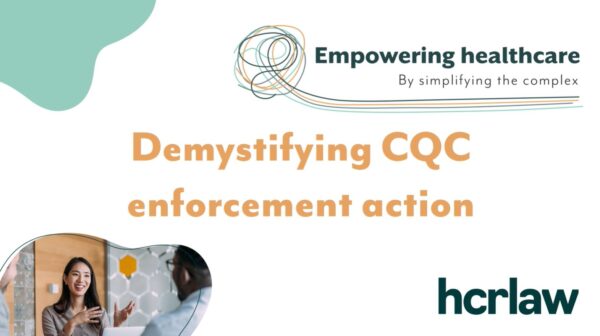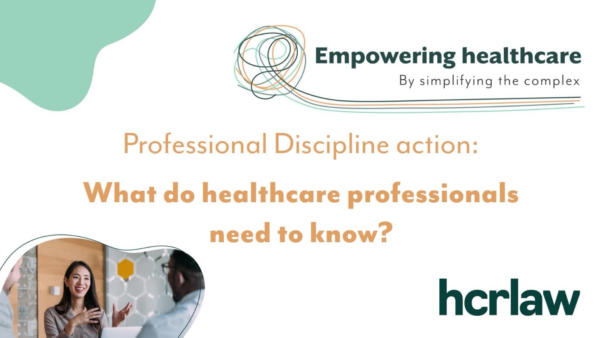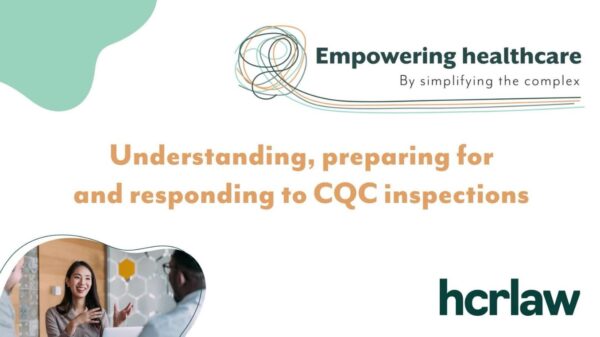

The Independent IT Review (“Review”) commissioned by the CQC following Penny Dash’s report (“Dash Report”) last year is out and it’s the most critical report on the CQC to date.
The Review was commissioned as the Dash Report highlighted issues with poorly performing IT systems, hampering the CQC’s ability to roll-out the Single Assessment Framework (SAF).
The Review highlights that the overarching regulatory transformation programme has (as of December 2024) cost £99 million, with less than 30% of deliverables having been signed off and only 5% of benefits having been achieved.
It notes, amongst other things, that benefits were overestimated, risks were not fully considered or managed, that there was no strategy for data and reporting, and executive-driven design choices did not align with user needs.
It also found that the primary cause of the IT failure was failed organisational transformation. The report states that despite the CQC’s efforts to create a Target Operating Model (“TOM”) (its regulatory approach), this was not accepted by the organisation, yet the Review notes that its most fundamental recommendation is to re-establish an effective TOM.
We’ve heard a lot of criticisms about the CQC in recent months. The focus before now has, very much, been focused on the failure of the SAF, however, the Review considers the failure at a much deeper level – that of the CQC’s core operating model.
A target operating model sets out how a business organises its people, processes, and tools to achieve its goals and execute its strategic vision. As Professor Sir Mike Richards commented on his report into the CQC’s single assessment framework and its implementation “[CQC’s] strategy set out a large number of benefits that it was intended to deliver, but without clear (indeed any) statements on how each of these would be achieved”.
He also noted that “the strategy does not provide any indication of how its vision might be achieved. Nor are there any metrics against which progress towards the stated outcomes might be measured. The findings outlined in Penny Dash’s interim report suggest that limited or no progress has been made on the majority of these outcomes, despite the strategy being published 3 years ago.”
Given this report suggests the need for a fundamental rebuild of the CQC’s operational structure, what do we need to see from the Commission now?
So, what do we need to see next from the CQC?
Mission / vision statement
To determine the CQC’s direction of travel and guide it to achieve its objectives, it must first set out its strategic scope through a mission statement. This should clearly define its goals, values and culture, outlining its purpose, including the value it can provide to all stakeholders and where it wishes to be in the future.
The mission statement should be used to guide and inform all behaviours and actions taken by the CQC. It’s questionable whether its current statement: “To ensure health and care services provide people with safe, effective, compassionate, high-quality care and to encourage those services to improve” is enough.
Objectives
The CQC must then set objectives to determine whether it’s achieving its mission. Objectives must follow the SMART acronym of being specific, measurable, achievable, relevant and time-bound.
Tactics
What we then need to see is some action so the CQC fulfils its objectives and therefore achieves its mission.
Whilst everyone in the sector wants to see this happen, in the meantime we have providers suffering from the acts and omissions of the CQC under its transformation programme.
It needs to move quickly, but effectively to enable the sector to demonstrate the good care that it is providing.
Our Healthcare Regulatory team are experienced in challenging CQC inspection reports and enforcement action. If you have a query about this topic, get in touch with the team.
How can we help you?
"*" indicates required fields










